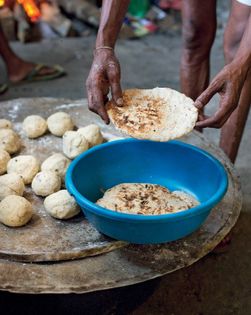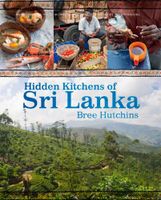Advertisement

Preparation info
- Makes
6
- Difficulty
Easy
Appears in
Published 2013
Sri Lankan roti is very different from Indian roti; it’s much thicker and harder, and usually has freshly scraped coconut (pol) added to the mixture. The best roti I tasted was at Monaragala Prison. The inmates added coconut, green chillies, onions and curry leaves to the mixture. They didn’t use any coconut oil, as it’s too expensive for prison cooking, but most recipes call for some because it prevents the roti from sticking when you cook it, so I have added a little to their recipe. I ha


